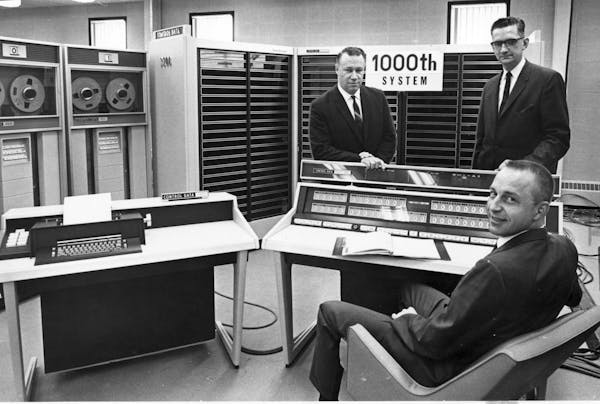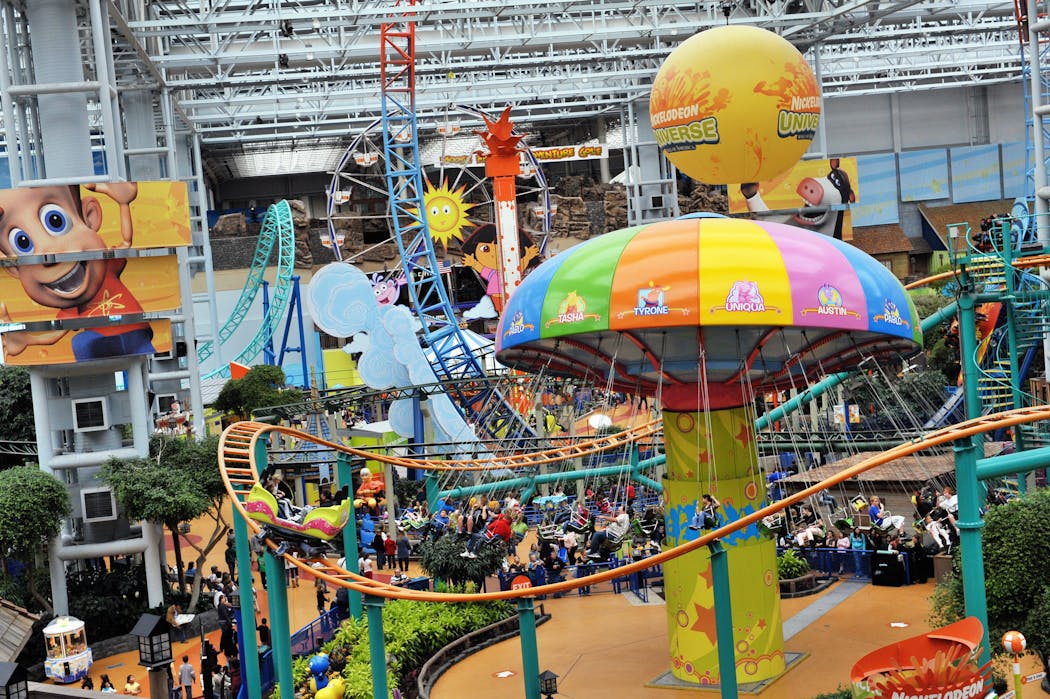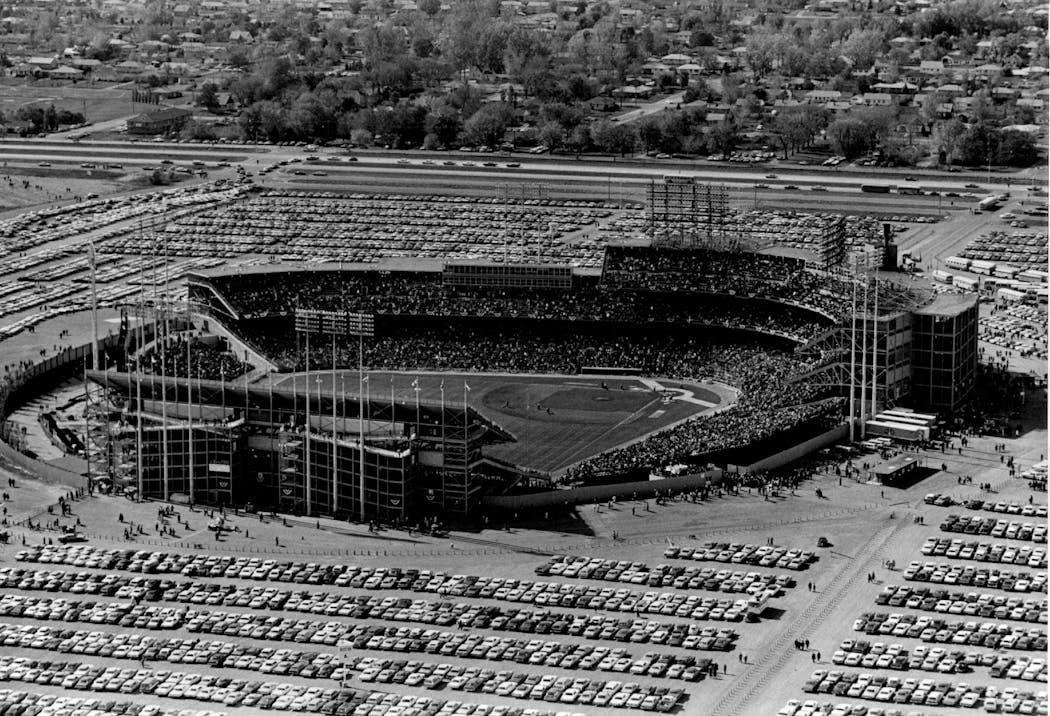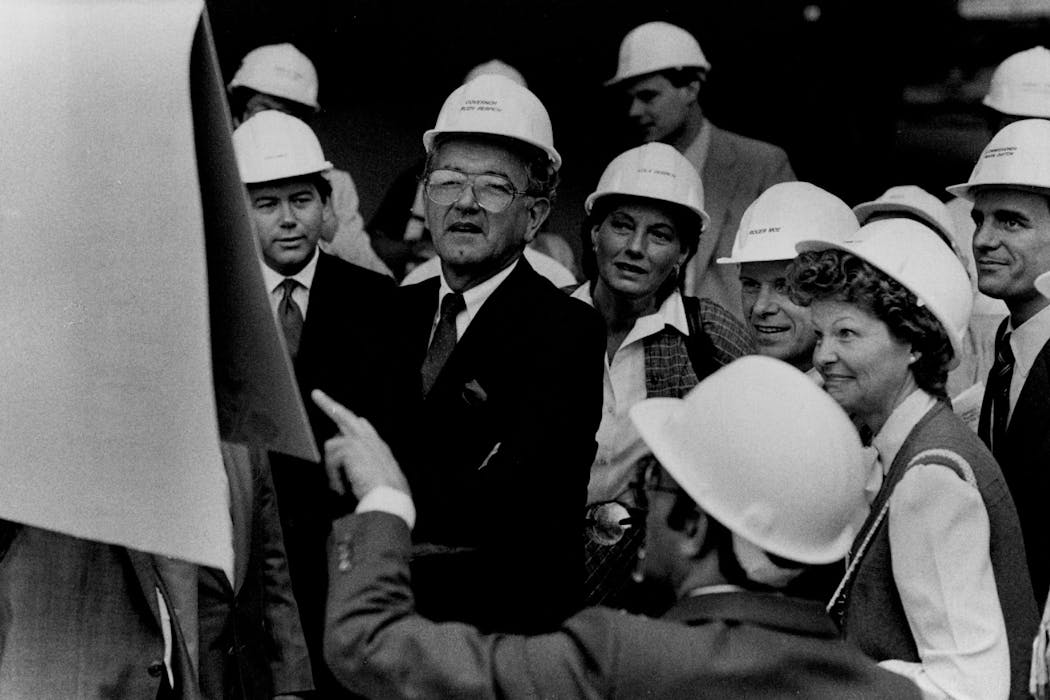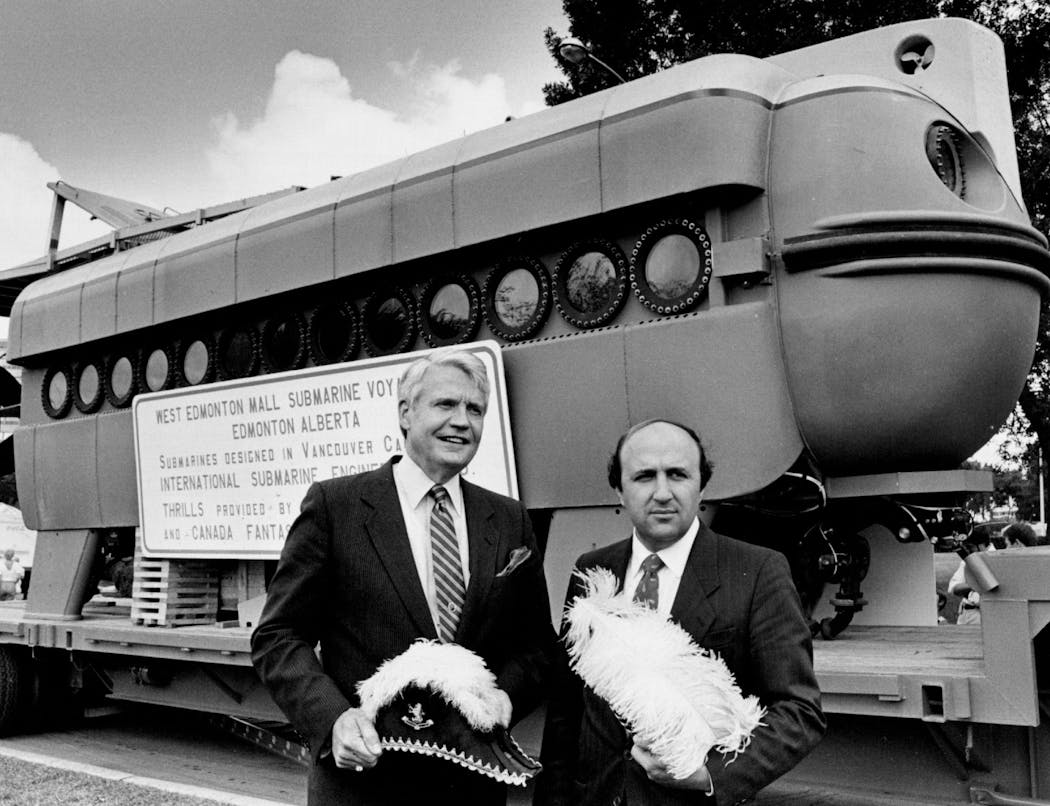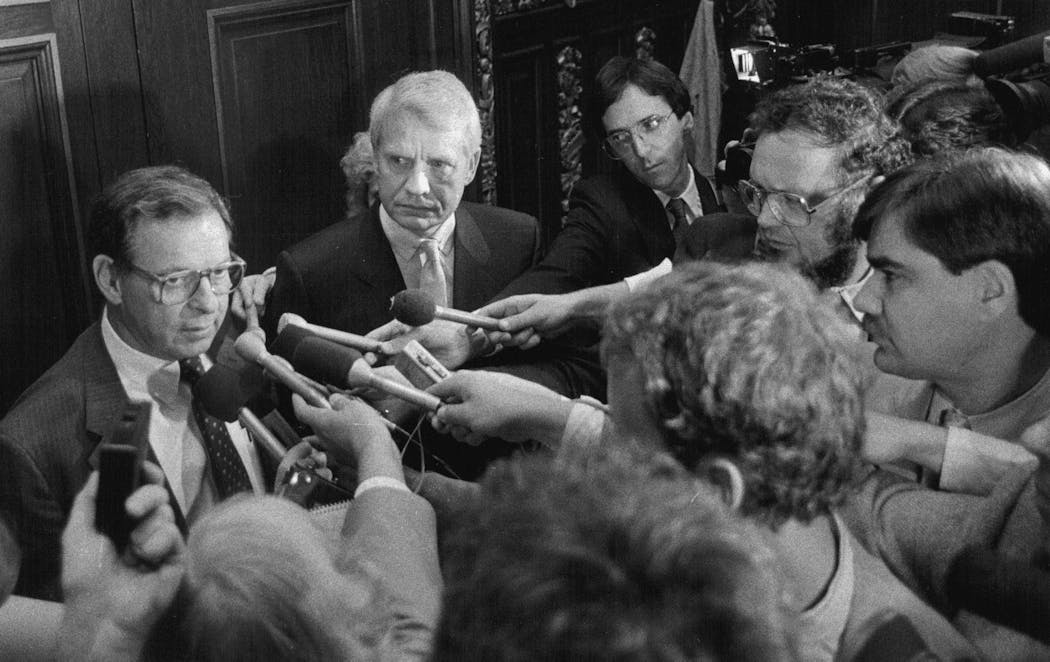Why was the Mall of America built in Minnesota?
Listen and subscribe to our podcast: Via Apple Podcasts | Spotify | Stitcher
The Mall of America is one of Minnesota's most well-known attractions. Now entering its fourth decade, the largest indoor shopping center in the country draws visitors from around the world to the Twin Cities suburb of Bloomington.
The mall is much more than just a shopping paradise. The complex's 5.6 million square feet is home to an aquarium, indoor amusement park, movie theater and more.
Minneapolis resident Rob Kalscheur wondered why the landmark destination is located in "flyover country." He submitted the question to Curious Minnesota, the Star Tribune's reader-powered reporting project.
Kalscheur speculated that it was because the Twin Cities is the largest major metropolitan area in this part of the country, drawing families from many Midwestern states to a one-stop shopping experience.
This is certainly part of the reason. But the full story is rooted in Bloomington's quest to remain a major destination after national sports teams departed the city's Metropolitan Stadium for Minneapolis' Metrodome in the 1980s. City leaders wanted the stadium's replacement to make a big statement, which is why they signed onto — and helped subsidize — the "fantasyland" vision of a Canadian development firm.
It was a controversial idea, in part because it threatened to draw a large number of people away from downtown Minneapolis.
Bloomington's national identity
The site where the Mall of America stands today was once home to Metropolitan Stadium. The stadium hosted both the Minnesota Twins and Minnesota Vikings, and was a large part of Bloomington's identity.
"You can't appreciate how proud Bloomington was that every time there was a nationally broadcast football game or baseball game, the first sentence was, 'Live from Met Stadium in the city of Bloomington,'" said Larry Lee, who was the assistant city manager of Bloomington in 1985, when the stadium was demolished.
The city's mayor, James Lindau, had pushed to have the new stadium built in Bloomington — but Minneapolis' "domed stadium" ultimately won out. After the demolition, Lee said both city officials and residents of Bloomington had large ambitions of replacing the stadium with something equally grand.
After putting out a request for ideas, many proposals for office buildings and hotels poured in from developers. Nothing caught the eye of city officials until a consulting group working with the city suggested they take a look at the West Edmonton Mall in Alberta, Canada.
The mall in the suburbs of Edmonton was the work of the Ghermezian family and their company, Triple Five. The facility includes an aquarium, indoor skating rink and water park, in addition to retail stores.
In July 1985, four Ghermezian brothers escorted a group of Minnesotans, including then-Gov. Rudy Perpich, around the West Edmonton Mall.
"I have literally been all over the world and I haven't seen anything like this anywhere," Perpich said in 1985 after returning from the trip. "This exceeds Disneyland."
Lee recalled how at the time, it was rare for shopping centers to have food and entertainment all under one roof.
A tough fight
Bloomington and state officials on the Edmonton trip had a largely positive reaction to the West Edmonton Mall, and found the concept of a similar destination in Minnesota appealing.
Bloomington officials approved Triple Five's proposal, which was dubbed the "Minnesota International Center" and included plans for a massive convention center and a fleet of submarines for visitors to explore a lake. But not everyone was sold on the big idea.
Former Star Tribune reporter R.T. Rybak, who covered the development debate, had a different impression from his visit to Edmonton with the Minnesota delegation.
"Nobody [else] went to downtown Edmonton at all, so I broke off to see — what was the impact? And it was bleak," said Rybak, who went on to become mayor of Minneapolis and is now CEO of the Minneapolis Foundation.
Rybak recalled walking around the quiet streets of Edmonton in contrast to the bustle of the Ghermezians' mall. He described the heart of the city as "shattered."
Deciding he could no longer have an unbiased opinion on the issue, he asked to stop writing about the topic.
Rybak wasn't alone in his views. Many other people concerned about the health of Minneapolis stepped up to oppose the development of the mall. A key point of contention was the convention center proposal, since Minneapolis was seeking to build a new convention center in downtown.
"I'm convinced that the Minneapolis people are trying to marshal their forces to kill this project to save their convention center," Lindau said in 1985.
The mall project needed to win over state lawmakers because the city was requesting special exemptions under state law to help subsidize the project.
In response to skepticism and disapproval coming from several prominent voices, including Dayton's department store, Lee said the city of Bloomington had to launch what he referred to as a robust "PR campaign" to get the community behind the project.
During a press tour, Nader Ghermezian called the project "the largest most complete, most comprehensive tourist attraction ever built anywhere in the universe."
"If we leave, do you think you'll have an opportunity like this again?" Ghermezian said. "How many people like us do you think there are in this world?"
'A home game every day'
Triple Five ultimately eliminated the convention center proposal, easing Minneapolis' objections to the project.
With the help of several influential Bloomington legislators, the Legislature in 1986 approved a bill giving Bloomington new taxing authority to subsidize public improvements around the mall site. The public subsidies amounted to more than $100 million when the mall was constructed, and further subsidies have since aided its expansion.
The mall opened to the public in 1992 and celebrated its 30th anniversary this year.
Lee said the Mall of America succeeded in the mission of replacing the energy and spirit of Metropolitan Stadium — and has had even more benefits for the city.
"There were 90 or 100 home games in the course of a year," Lee said. "The Mall of America has a home game every day."
If you'd like to submit a Curious Minnesota question, fill out the form below:
Read more Curious Minnesota stories:
Why is the U.S. Hockey Hall of Fame located in tiny Eveleth, Minnesota?
Why doesn't Minnesota charge a sales tax on clothing?
Why do so many Twin Cities mall names end in "dale"?
Where did streetcars once travel in the Twin Cities suburbs?
Why is U.S. Bank Stadium in a constant state of repair?
How did pro baseball get its start in Minnesota?
